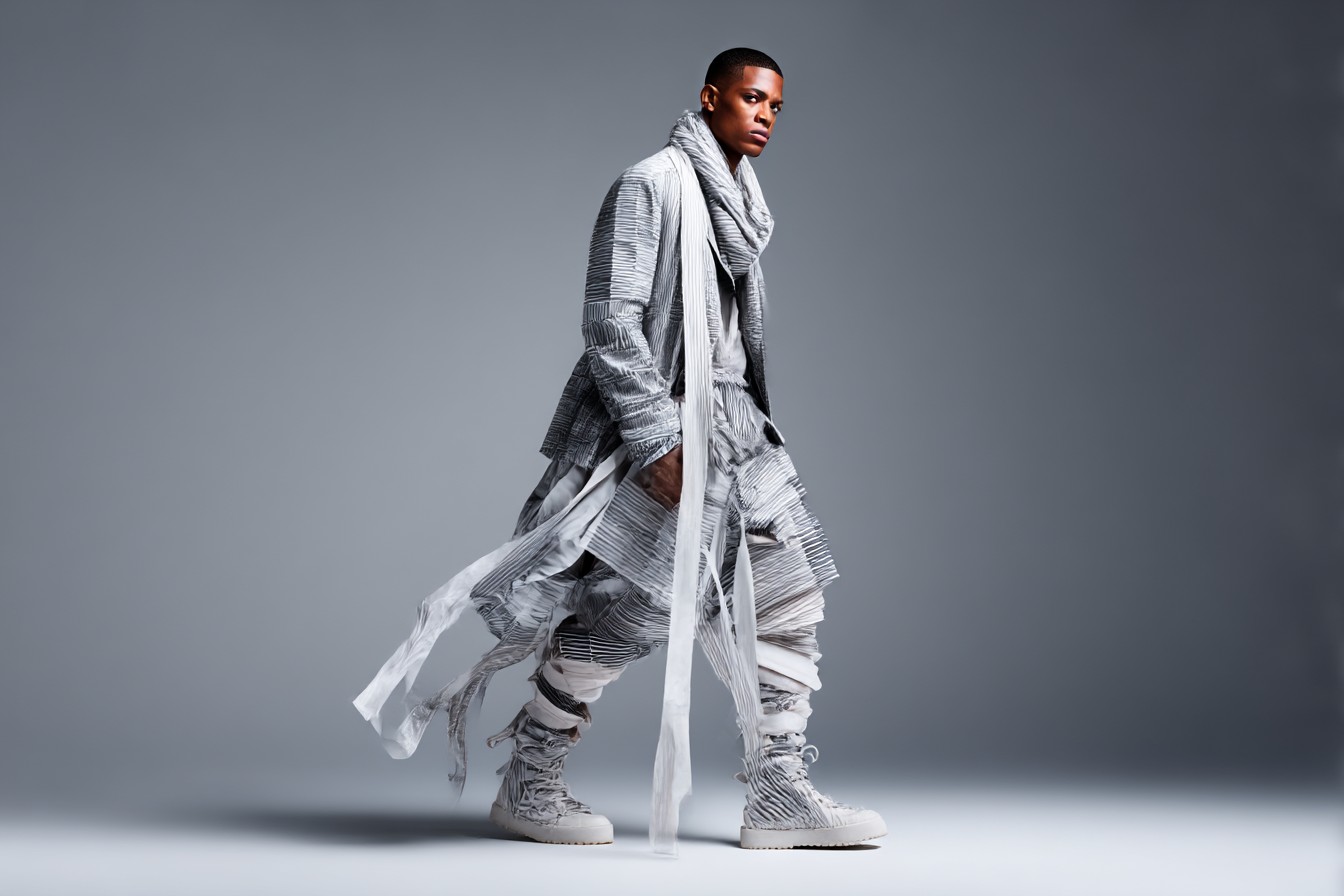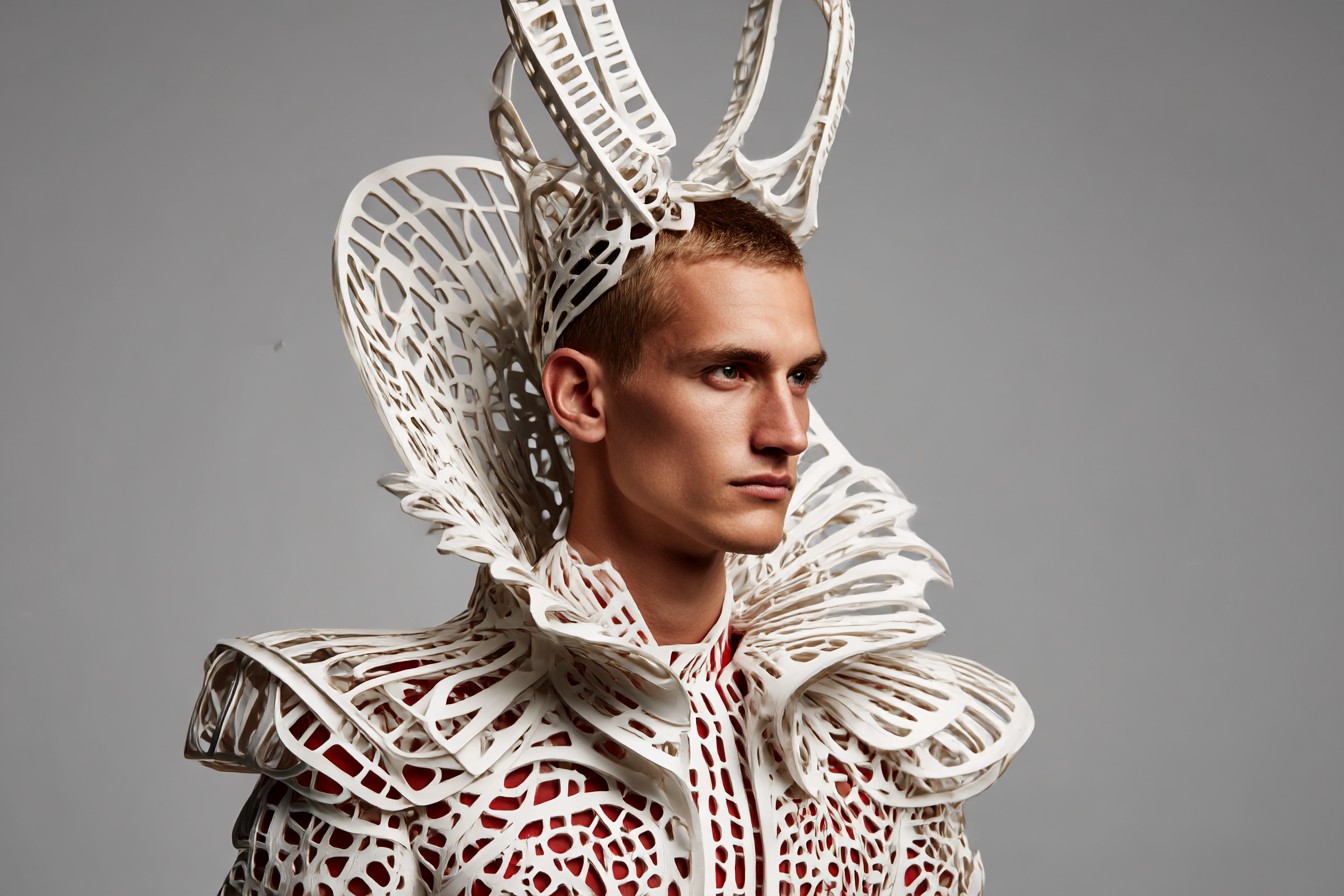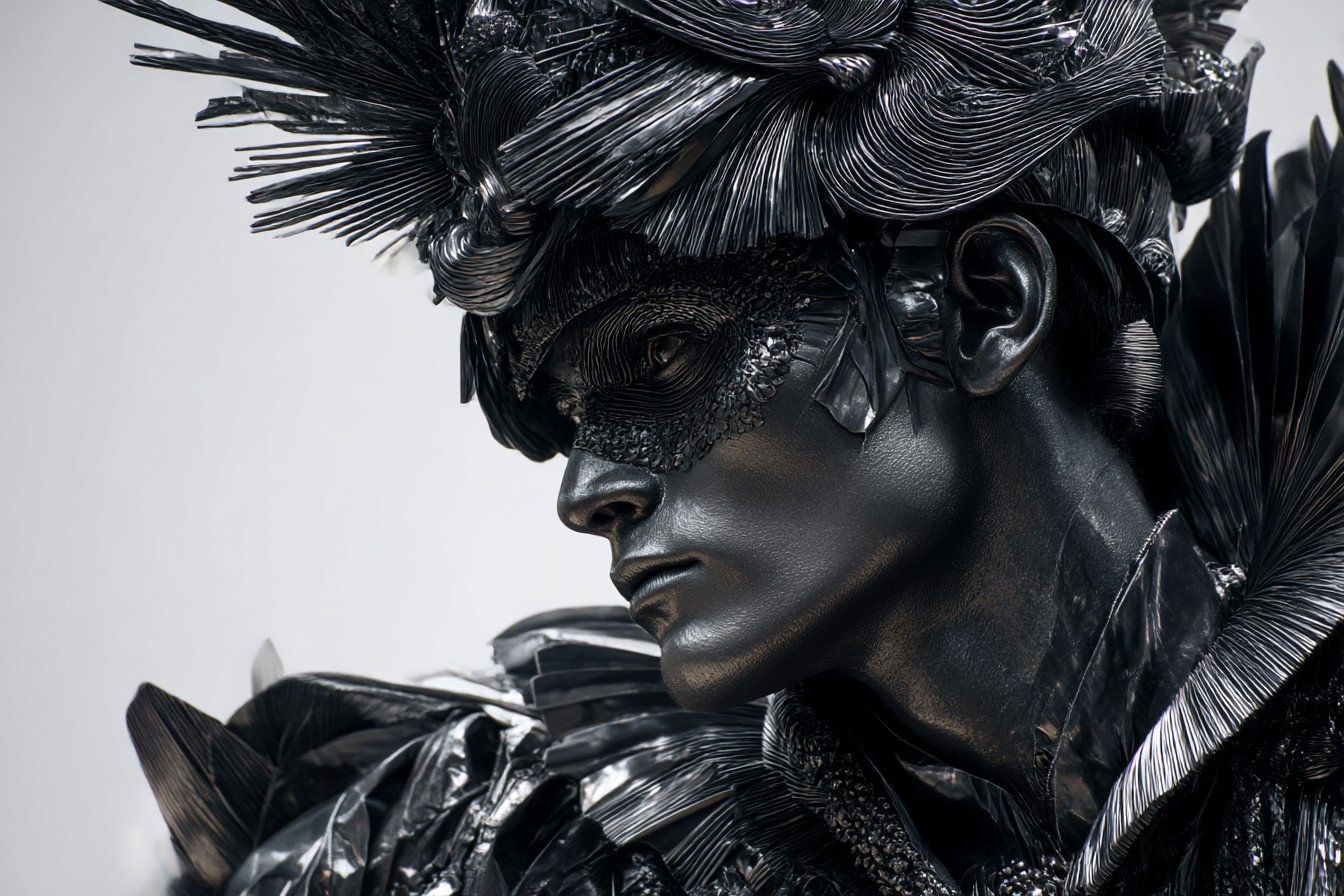Let me set the scene: It’s a Tuesday afternoon, I’m on deadline for three different articles, and my editor texts asking if I can cover a last-minute panel discussion on sustainable fashion happening Thursday evening. “Dress code is creative business casual,” she adds, which could mean literally anything from “jeans without holes” to “avant-garde but make it office.” I look down at my current outfit—sweatpants with a coffee stain and a faded band t-shirt from 2007—and realize nothing in my clean clothes pile is going to cut it.

This is how I find myself power-walking through H&M on my lunch break, a man on a mission with exactly 47 minutes before I need to be back at my desk for a call. H&M—the Swedish fast fashion giant that somehow manages to be simultaneously too trendy for normal life and not quite trendy enough for fashion people. The place where sizing seems to have been determined by throwing darts at a numerical board while blindfolded.
I grab an armful of items in what I think is my size and head to the fitting room, where I’m about to relearn a lesson I’ve somehow forgotten since my last emergency H&M visit: their clothes are not designed for bodies that eat regular meals and occasionally exercise in ways that build certain muscle groups.
The first pair of trousers—allegedly my size according to the label—won’t even clear my thighs. The second pair goes on but creates a waistband situation reminiscent of a busted can of refrigerator biscuits. The third pair fits my waist perfectly but apparently assumes I have the legs of a daddy longlegs spider. I emerge from the fitting room 20 minutes later with exactly one item that fits—a plain black t-shirt that I could have bought literally anywhere.

This experience isn’t unique to me. I’ve watched friends of all genders, sizes, and body types struggle through the bizarre dimensional portal that is H&M’s sizing system. My buddy Marcus, who has the build of a former college athlete now enjoying regular happy hours, describes shopping there as “psychological warfare.” My friend Sarah, who wears standard sizes in most stores, recently held up a pair of H&M jeans and asked, “Is this meant for an adult woman or a particularly stylish toddler?”
So what actually fits at H&M when you have a human body rather than the apparently preferred dimensions of a praying mantis? After years of trial and mostly error—plus some extremely candid conversations with store employees who shall remain anonymous for their job security—I’ve compiled a field guide for navigating this treacherous retail terrain.
First, let’s address the elephant in the room: vanity sizing does not exist at H&M. While most American retailers have gradually increased their dimensions while keeping the same size number (making consumers feel better about themselves), H&M has stubbornly maintained European sizing standards that tend to run smaller than what Americans are used to. This means that if you typically wear a medium, you’re probably a large or XL at H&M. If you typically wear an XL, you might need to size up to their XXL or even look for items from their plus-size collection.

I learned this lesson the hard way after insisting I was a medium for years despite substantial evidence to the contrary. There’s something uniquely humbling about being unable to get your arms through the sleeves of a shirt in your “normal” size. Now I automatically grab at least one size up from my usual and save myself the existential crisis.
But here’s where it gets truly weird—the sizing isn’t even consistent within the store itself. H&M operates multiple lines under one roof, each with its own distinct fit profile. Their basic collection tends to run the smallest. The Divided collection (aimed at younger shoppers) is slightly more forgiving but cut for people who have never experienced the joy of proper Italian pasta. The Premium collection sometimes—sometimes—acknowledges that humans have three dimensions rather than two.
All of this is further complicated by H&M’s tendency to use different materials and cuts from season to season, even for seemingly identical items. The perfect t-shirt you found last summer will be replaced by this summer’s “same” t-shirt that is somehow two inches narrower in the shoulders and made of material with the stretch properties of cement.

“We regularly update our fits based on current trends,” an H&M corporate rep told me when I asked about this phenomenon for a previous article. Which is retail-speak for “we’ll make the arms skinnier whenever we feel like it, good luck keeping up.”
So what items actually work for regular human bodies? After conducting highly unscientific research (meaning I’ve wasted countless lunch breaks in their fitting rooms and interrogated everyone I know who shops there), I’ve identified some patterns.
For men with athletic builds (meaning you occasionally lift something heavier than a smartphone), the regular fit shirts are your best bet. Size up—always size up—and look for items with at least some stretch in the material. The slim fit shirts are designed for people shaped like pipe cleaners, no matter what size you choose. Their “muscle fit” should be renamed “compression garment” and approached with extreme caution unless you enjoy feeling like you’re wearing a sausage casing.

Blazers are actually a surprising win for many body types, especially the unstructured ones from their premium lines. They tend to have more generous cuts through the chest and shoulders than their other items, though the sleeves often run short. If you have longer arms, be prepared to wear them with the sleeves pushed up casually or budget for alterations.
Men’s pants present the greatest challenge for anyone with developed leg muscles. The “slim fit” can barely accommodate a normal human thigh, while the “skinny fit” seems designed for people who skip leg day for their entire lives. Your best options are either their straight fit or relaxed fit trousers, which actually accommodate things like quadriceps and calves. Their “regular fit” jeans are similarly forgiving, though they’ve been gradually slimming these down too in recent years.
For women, H&M’s sizing creates even more confusion thanks to their numerical system that corresponds to neither American nor traditional European sizing in any logical way. I’ve watched my friend Claire, who wears a consistent size 8 in most American brands, try on H&M items ranging from size 8 (too small) to size 14 (too big) in a single shopping trip.

“Their size 12 literally fits exactly the same as my size 8 jeans from Levi’s,” she told me while stress-eating a pretzel in the mall food court afterward. “Make it make sense.”
Women’s tops tend to be more forgiving than bottoms, with blouses and sweaters from the main collection generally accommodating a range of figures as long as you size up. Their basic t-shirts and tanks run notoriously small through the bust and shoulders, however, often requiring going up two sizes for a comfortable fit.
The dresses fall into two categories: shapeless sacks that look good on absolutely everyone, and structured sheaths that look good on approximately three people worldwide. There is no in-between. The wrap dresses are generally the most accommodating for different body types, while anything with a defined waist should be approached with caution and a willingness to try on multiple sizes.

Perhaps the most maddening aspect of H&M’s sizing isn’t just that it runs small—it’s that it’s wildly inconsistent. I’ve personally witnessed the same numerical size vary by what appears to be inches between different styles and collections. This isn’t unique to H&M—most fast fashion brands exhibit similar inconsistencies due to their distributed manufacturing and rapid turnover—but H&M seems to embrace this chaos with particular enthusiasm.
“I literally have to try on every single thing,” my friend Dana explained while showing me her H&M collection—a random assortment of sizes from XS to XL, all of which fit her perfectly. “The size is just a starting suggestion, not actual information.”
This inconsistency extends to H&M’s online shopping experience, which feels like playing a particularly frustrating lottery. The same item that fits perfectly in-store might arrive in a completely different dimension when ordered online, despite being labeled as the same size. This has led to my personal rule of never ordering anything from H&M that I haven’t already tried on in person—a policy that defeats the entire purpose of online shopping.

Mark, a fit model who occasionally works with mainstream retailers, offered some insight into why H&M’s sizing feels so disconnected from reality. “Most fast fashion brands aren’t fitting their clothes on a range of real bodies,” he explained. “They’re designing digitally and then maybe checking the sample on one or two fit models who are selected specifically because they have proportions that match the brand’s aesthetic ideal.”
What he’s diplomatically saying is that H&M, like many fashion brands, designs for the body they want you to have, not the body you actually do have. The difference is that higher-end brands usually account for this with more generous cuts, while H&M seems to have embraced aspirational sizing as a core philosophy.
Despite all these challenges, there are some genuine finds to be had at H&M if you know where to look and embrace a trial-and-error approach. Their knitwear tends to be more forgiving than their woven items. Anything with elastane or other stretch materials will accommodate a wider range of bodies. Oversized and boxy cuts—when you can find them—often work better for athletic or curvy figures than their standard fits.

The best strategy I’ve found is to completely ignore the size on the label and just grab multiple options of anything that catches your eye. I now routinely take the same item in three different sizes into the fitting room, treating the size label as more of a vague suggestion than actual information. It’s time-consuming and occasionally demoralizing, but it’s the only way to navigate a sizing system that seems designed by someone who’s never met an actual human being.
What makes this all the more frustrating is that H&M produces some genuinely good designs at accessible price points. Their collaborations with high-end designers bring interesting silhouettes to the masses. Their sustainable collections use innovative materials that are better for the planet. Their basic items can be the backbone of a versatile wardrobe—if you can find them in a size that acknowledges the existence of your ribcage.
I eventually found a decent outfit for that panel discussion, by the way. Black jeans (two sizes up from my usual), a simple oxford shirt (one size up, still tight in the shoulders), and an unstructured blazer that somehow fit perfectly off the rack, a miracle I’m still not entirely convinced wasn’t a hallucination induced by fitting room fluorescent lighting.
As I was checking out, the cashier looked at my selections and said, “Did you check the sizes? People usually need to size up here.” When I told her I already had, she nodded knowingly. “Smart. I work here and I still get it wrong half the time.”
That’s perhaps the most honest assessment of H&M sizing I’ve ever heard. Even the people who work there daily can’t consistently predict what will fit.
So the next time you find yourself in an H&M fitting room wondering if you’ve somehow grown three inches across the shoulders since breakfast, remember: it’s not you, it’s them. Their sizing exists in some parallel dimension where humans evolved differently—narrower, longer, and apparently without the need to ever raise their arms above shoulder height given how many of their shirts seem to restrict that particular movement.
Shop accordingly, bring your patience, and maybe eat before you go. Nothing makes weird sizing more traumatic than low blood sugar and fluorescent lighting. Trust me on this one.

Leave a Reply